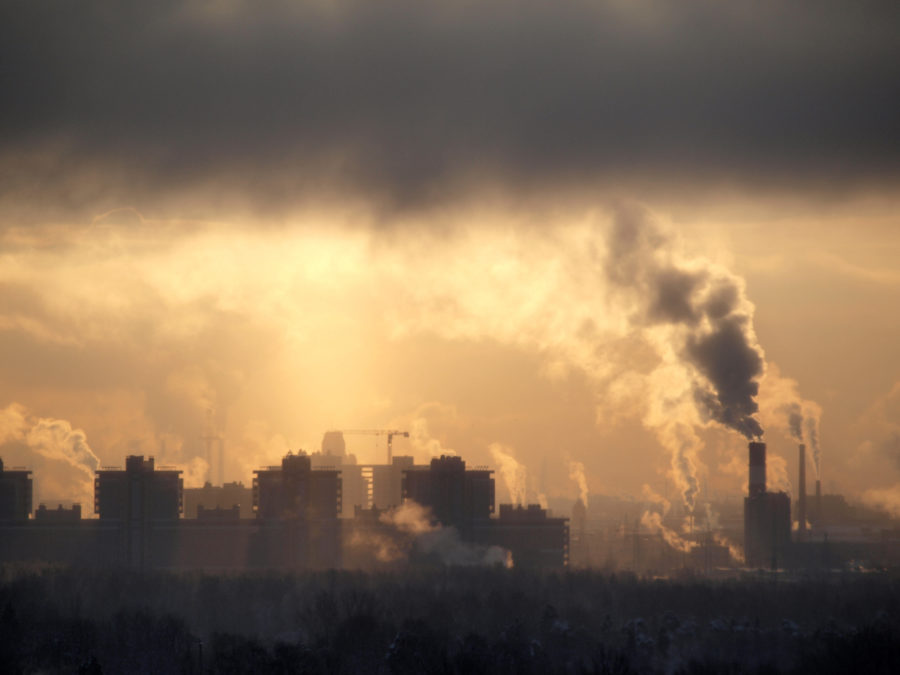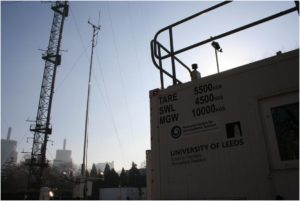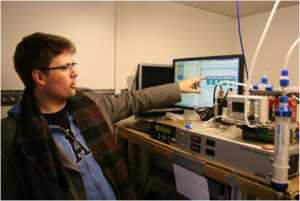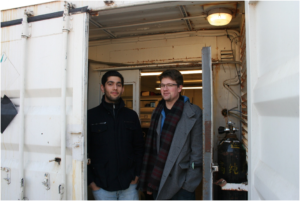13th July 2017
Smog Chasing – the UK and China team up on air pollution

On a scrubby patch of land in Beijing’s north-west, over which the capital’s original Mongol citadel’s walls would have once cast an imposing shadow, nine pristine white shipping containers surround a slender meteorological gantry. Erected by the Chinese government in 1979, supposedly after President Richard Nixon noted the Chinese capital’s appalling levels of air pollution, the gantry stands at 325 metres, a head taller than the Eiffel Tower.
While a lot has changed in Beijing since the 1970s, the air quality, by most measures, has worsened.

As soon as dawn breaks, dozens of researchers appear, scurrying between shipping containers to collate the previous night’s data and make adjustments to over 20 tonnes of instruments, many of them prototypes shipped to China from Europe. Others squeeze into the gantry’s constricting lift to check equipment fixed at its very top. This bucolic scene is what the cutting edge of scientific collaboration looks like.
Representing a joint investment equivalent to £11 million, the Air Pollution and Human Health in a Chinese Megacity programme (APHH China) was the first major international research programme that the Chinese co-funder, the National Natural Science Foundation of China (NSFC), ever commissioned. Funded on the UK side by the Natural Environment Research Council (NERC) and the Medical Research Council (MRC), the programme is a source of particular pride for the UK Research Councils. Sixteen UK universities and research institutes, six leading Chinese research institutions and three UK partner research organisations are conducting research at the site.
Professor Tim Wheeler, Director of Science and Research at NERC, said: “Through close collaboration between UK and Chinese researchers, this programme aims to find new solutions to the shared challenge of urban air pollution and greatly enhance our knowledge of both the origins of airborne pollutants and how they impact human health around the world.”

In their snug shipping container, Dr Stephen Worrall and PhD student Archit Mehra of the University of Manchester talked us through their project to monitor peaks in the emissions of atmospheric pollutants, compiling data they can then pass on to other teams analysing chemical composition. Each pollutant, when measured at the site, has a unique ‘fingerprint’ that researchers can use to pinpoint its source. Other teams are monitoring black carbon, nitric acid, ozone and the levels of aerosols attributed to domestic activity such as heating and cooking.
“If we were here alone, we wouldn’t have nearly so much information to work with,” said Worrall, adding that the UK researchers are, thanks to their close proximity to their Chinese peers, able to easily exchange data, discuss mutually-observed anomalies and, crucially, share spare parts for the often temperamental hardware on-site.

The UK is a natural partner for China on this critical issue, with London recording historic levels of airborne pollutants in recent years, while Beijing’s municipal government and China’s Ministry of Environmental Protection have embarked on an unprecedented programme designed to tackle the Chinese capital’s smog problem once and for all.
“International collaborations in vital science areas bolster the UK’s status as the world’s research and innovation partner of choice, evidenced by RCUK’s growing portfolio with China, which is rapidly emerging as a world science superpower,” said Professor Wheeler.
The Atmospheric Pollution & Human Health in a Chinese Megacity programme is a Newton Fund programme delivered by NERC, the Medical Research Council, and the National Natural Science Foundation of China. The programme is facilitated on the UK side by the RCUK China office, which celebrates its 10th anniversary this year. This blog is a modified version of a feature on NERC’s Planet Earth blog, to see the original click here.